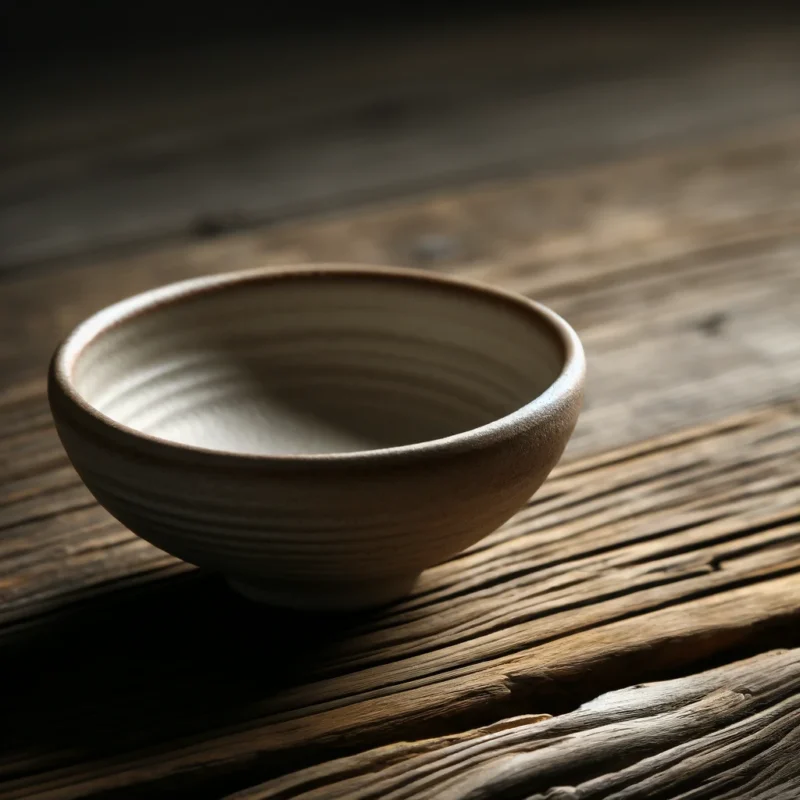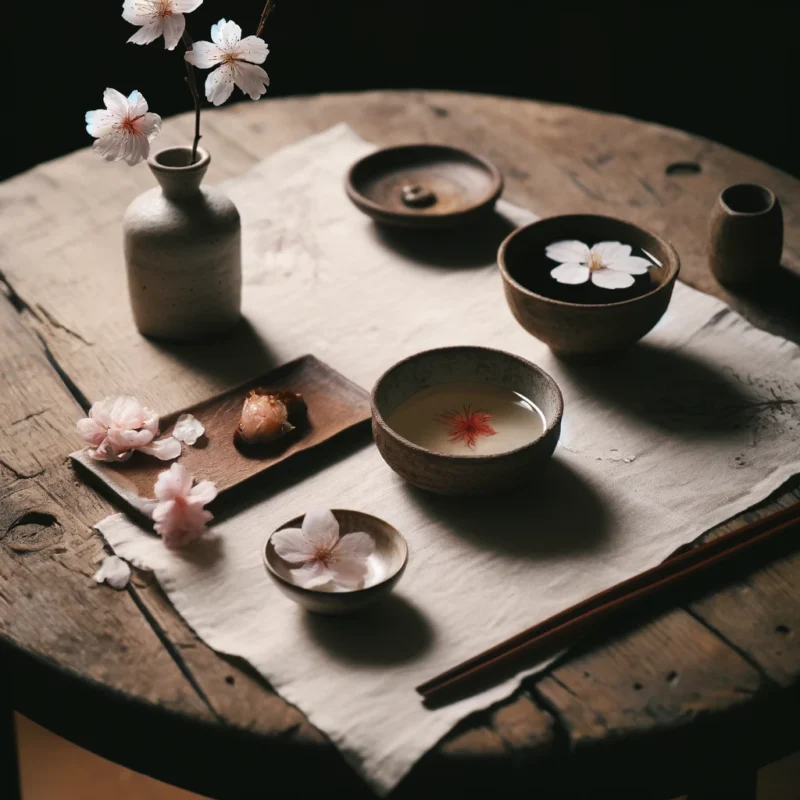In exploring the profound nature of yugen, this article delves into the philosophical underpinnings of wabi-sabi, a concept deeply ingrained in various aspects of culture and aesthetics, extending its influence into gaming, sexuality, and culinary experiences. Yugen, often associated with the evocation of the sublime and the profound in understated ways, aligns closely with the principles of wabi and sabi, which celebrate the beauty of imperfection, impermanence, and the patina that comes with age. This convergence presents a unique lens through which we can understand and appreciate the intricacies of human experiences and expressions, revealing the value in what is often overlooked.
The journey into the art of yugen will navigate through the basics of wabi-sabi philosophy, exploring its application in seemingly disparate domains: the immersive realms of gaming, the intimate expressions of sexuality, and the sensory-rich world of cuisine. By tracing the thread of imperfection and impermanence across these areas, the article illuminates how these principles cultivate a deeper appreciation for the nuanced beauty in all facets of life. Along the way, practical suggestions for embracing wabi-sabi in daily life will be offered, guiding readers toward cultivating an aesthetic that finds serenity in asymmetry, simplicity, and the natural cycle of growth and decay.

The Basics of Wabi-Sabi Philosophy
Origin and Meaning
Wabi-sabi, deeply rooted in the Japanese aesthetic, centers on the acceptance of transience and imperfection. Originating from Chinese Zen Buddhism, this philosophy was vividly illustrated in a 16th-century legend involving Sen no Rikyu and his tea master, Takeeno Joo. The story recounts how Rikyu, upon his master’s request, meticulously cleaned and arranged the garden, only to shake a cherry tree, allowing petals to scatter randomly, embracing the beauty of imperfection. The terms “wabi” and “sabi” reflect this ethos; “wabi” translates to a subdued, austere beauty, while “sabi” denotes the beauty of a rustic patina.
Core Principles
The principles of wabi-sabi are not just philosophical but are practically applied in daily life and art. It emphasizes characteristics such as asymmetry, roughness, simplicity, economy, austerity, modesty, intimacy, and an appreciation of the natural world and its processes. These principles guide one to appreciate the beauty in the humble and the decayed, encouraging a connection to nature and the inner self.
- Asymmetry (Fukinsei): Celebrates irregularity and imbalance, suggesting that imperfection is an integral part of existence.
- Simplicity (Kanso): Advocates for clarity and elimination of clutter, highlighting the essence of the objects and their natural beauty.
- Naturalness (Shizen): Emphasizes authenticity, suggesting that something in its natural state, unadorned and unpretentious, holds true beauty.
- Subtlety (Yūgen): Encourages appreciation for the subtle and the not immediately obvious, evoking a deeper contemplation of the world.
- Tranquility (Seijaku): Finds calm and stillness in the midst of life’s chaos, aligning closely with the principles of wabi-sabi.
These principles collectively foster a lifestyle that values the overlooked and the transient, promoting a life deeply connected to the authentic and the impermanent. This philosophy not only enhances personal well-being but also suggests that embracing these aesthetic and ethical ideals can lead to a more virtuous and civilized society.

Embracing Imperfection in Gaming
Examples of Imperfection in Gaming
In the realm of video games, embracing imperfection can manifest in various forms, from the aesthetics to the gameplay mechanics. For instance, the game “Link’s Awakening” utilizes a wabi aesthetic, suggesting a larger world beyond the visible, which adds depth and mystery to the gaming experience. Similarly, “Super Mario World” exhibits individual tiles on the Donut Plains that are not perfectly aligned, creating a sense of authenticity and human touch in the digital environment. These subtle imperfections are not only acceptable but are often celebrated as they contribute to the uniqueness and charm of the game.
Moreover, games like “The Witness” integrate sound and visual elements so intricately that each component, though not flawless, forms a cohesive and immersive experience. This approach mirrors the wabi-sabi appreciation for beauty in the “imperfect, impermanent, and incomplete”, encouraging players to find value in the nuances of the game’s design.
The Benefits of Wabi-Sabi in Gaming
Adopting the principles of wabi-sabi in gaming can lead to several benefits, enhancing both the player’s experience and the development process. Games that acknowledge their imperfections often invite players to explore and interact with the game world in innovative ways. For example, unpredictable elements in games, such as the erratic behavior of crates and elevators in “Super Mario World,” can add an element of surprise and delight, enriching the gaming experience.
Furthermore, the concept of imperfection promotes continuous improvement and evolution within game development. Embracing a wabi-sabi approach allows developers to release games that might not be perfect but grow and improve over time through community feedback and iterative updates. This not only fosters a more engaged and forgiving community but also aligns with sustainable development practices by valuing progress over perfection.
The integration of AI in games also illustrates how imperfections can lead to unique artistic expressions. By combining the precision of AI with the imperfect touch of human creativity, developers can create games that are both technically advanced and deeply personal. This symbiosis between man and machine enhances the artistic quality of games, ensuring that they resonate more profoundly with players on an emotional level.
In conclusion, the philosophy of wabi-sabi offers a valuable perspective in the world of gaming, where imperfections are not seen as flaws but as opportunities for creativity and human connection. By embracing these principles, developers and players alike can appreciate the beauty in the imperfections that make each gaming experience uniquely enriching.

Wabi-Sabi in Sexuality
Accepting Imperfect Bodies
Embracing the wabi-sabi philosophy in the context of sexuality begins with accepting the natural imperfections of our bodies. The Japanese aesthetic of wabi-sabi teaches us to appreciate beauty that is “imperfect, impermanent, and incomplete“. This perspective is crucial when considering our physical selves, which are subject to change and aging. For example, stretch marks, often seen as flaws, can be viewed as marks of life’s journeys, such as weight fluctuations or childbirth. By accepting these natural occurrences, individuals can foster a healthier self-image and appreciate their bodies as they are, without succumbing to societal pressures of perfection.
Building Emotional Connections from Imperfections
In relationships, wabi-sabi encourages partners to accept and love each other’s flaws rather than striving for an unattainable ideal. This acceptance can lead to deeper emotional connections and a more genuine relationship. Embracing imperfections can transform interactions, shifting the focus from criticism to appreciation. For instance, acknowledging personal mistakes and recognizing the positive actions of a partner can reduce conflict and enhance mutual understanding. This approach is about seeing the beauty in the “cracks” of each other’s character and loving them more for it, as suggested by the philosophy that “There is a crack in everything. That’s how the light gets in”.
By integrating these principles of wabi-sabi into personal and intimate relationships, individuals can develop a more profound connection with themselves and their partners. This acceptance not only enriches personal interactions but also aligns with a more holistic and compassionate view of human imperfection and the transient nature of life.

Applying Wabi-Sabi to Cuisine
Examples of Wabi-Sabi in Culinary Arts
In the culinary world, the essence of wabi-sabi can be seen in the simple, rustic presentations that evoke a deep connection to nature and authenticity. A prime example is the experience of eating bread torn directly from a baguette, which despite its uneven appearance, often tastes superior to perfectly sliced bread. Similarly, cookies that are not perfectly circular but misshaped can appear more inviting, as their jagged edges seem to convey a sense of homemade warmth and love.
The allure of wabi-sabi is also evident in the use of wildflowers for table settings. While not as meticulously arranged as florist bouquets, wildflowers picked at random by nature can create a uniquely delightful and touching display, embodying the wabi-sabi appreciation for natural beauty and simplicity.
Cooking and Dining Experiences
Wabi-sabi in cooking emphasizes the beauty of imperfection and the value of simplicity. This philosophy is beautifully illustrated by peasant food, which may be made from simple ingredients yet bursts with flavor. Such dishes reflect an authenticity that resonates on a personal level, making them more relatable and enjoyable. In the kitchen, one might find worn wooden cutting boards and a collection of well-used tools, which are celebrated not despite, but because of their imperfections and signs of wear.
The dining experience itself can also reflect wabi-sabi principles. For instance, in Tokyo, the act of dining alone among strangers at a communal table allows for a shared, yet individually unique, appreciation of simple yet profound dishes like soba with a perfectly fried egg or shaved ice with matcha and sweet red beans. These moments capture the fleeting beauty of the experience, a core tenet of wabi-sabi.
Incorporating natural materials such as wood, stone, and clay in kitchen design can enhance the wabi-sabi vibe, emphasizing the beauty that comes with age and use. Subdued color palettes and handmade artisanal pieces further celebrate the imperfections and craftsmanship that wabi-sabi values. Open shelving that displays everyday items adds to the aesthetic by highlighting their functional beauty and the marks of their frequent use.
Through these examples, it becomes clear that wabi-sabi in cuisine is not just about the food itself but also about the environment in which it is prepared and consumed. It encourages a return to the basics, where the focus is on the genuine and the transient, and where every meal is a reminder of life’s simple pleasures and impermanent beauty.

The Interconnectedness of Gaming, Sexuality, and Cuisine
Common Themes of Wabi-Sabi
Wabi-Sabi, originating from 15th century Japan, emphasizes simplicity, peace, and the acceptance of the transient and flawed nature of life. This philosophy is evident in the realms of gaming, sexuality, and culinary arts, where imperfection is not only accepted but celebrated as a fundamental aspect of human experience. In gaming, for instance, the appreciation of imperfections such as non-aligned tiles in “Super Mario World” or unpredictable game mechanics reflects a wabi-sabi approach, recognizing the beauty in these flaws. Similarly, in sexuality, wabi-sabi teaches the acceptance of one’s body with all its imperfections, promoting a healthier self-image and deeper emotional connections. Culinary practices also adhere to wabi-sabi principles, where the rustic and simple presentation of dishes emphasizes natural beauty and authenticity.
The concept extends to the acceptance of aging and wear, seen in the cherished patina of a seasoned cast iron skillet or the worn pages of a beloved cookbook, symbolizing the passage of time and the stories they hold. This acceptance enriches the gaming experience by valuing the history and evolution of games, enhances sexual relationships through a deeper acceptance of oneself and others, and elevates culinary experiences by appreciating the history and simplicity of ingredients and cooking methods.
Synthesizing the Three Areas
The synthesis of gaming, sexuality, and cuisine under the umbrella of wabi-sabi philosophy offers a unique perspective on how these areas can mutually enhance one another. In gaming, the integration of wabi-sabi can lead to a more immersive and emotionally connected experience, where players appreciate the artistry and imperfections within the game. This approach can influence how individuals perceive and engage with their own bodies and relationships in the realm of sexuality, encouraging an acceptance of natural imperfections and fostering deeper, more meaningful connections.
In the culinary world, embracing wabi-sabi can transform dining into an experience that celebrates the imperfect and transient nature of food, from farm to table. The rustic presentation and appreciation of the natural qualities of ingredients can enhance the dining experience, making it a poignant reminder of the simplicity and impermanence valued in wabi-sabi philosophy.
By understanding the interconnectedness of these domains through the lens of wabi-sabi, individuals can cultivate a deeper appreciation for life’s imperfections across various aspects of their lives. This holistic approach not only enriches personal experiences in gaming, sexuality, and cuisine but also fosters a greater appreciation for the impermanent and imperfect nature of life itself.
Practical Ways to Embrace Wabi-Sabi in Daily Life
Simple Steps to Get Started
- Accept Impermanence and Imperfection: Embrace the concept that nothing is perfect and everything is transient. This realization can alleviate the pressure of striving for perfection in daily activities and interactions.
- Practice Mindfulness: Engage in daily mindfulness practices, such as focusing on breathing or being fully present while drinking a cup of coffee. This helps savor the beauty of the present moment and appreciate the simple joys of life.
- Creative Expression: Allow yourself to experiment and take risks in creative endeavors without the fear of imperfection. This could involve activities like painting, writing, or crafting, where the process is valued over the perfect outcome.
- Embrace Natural Changes: Recognize and accept the natural aging process of yourself and the things around you. This acceptance can lead to a deeper appreciation of life’s fleeting moments and the beauty they hold.
Mindfulness Practices
- Daily Meditation: Implement short mindfulness meditation practices to enhance acceptance of life’s impermanence. This can be as simple as observing the natural environment, like watching leaves fall or clouds move, which embodies the wabi-sabi spirit.
- Gratitude Exercises: Cultivate gratitude for everyday experiences and objects. This practice can transform your perspective, helping you appreciate the beauty in the ‘now’ and reducing the urge to take things for granted.
- Forest Bathing: Engage in shinrin-yoku, or forest bathing, to connect deeply with nature. This practice not only soothes the mind but also brings one into direct contact with the impermanent and imperfect aspects of nature, enhancing personal well-being.
By integrating these practices into daily life, individuals can cultivate a wabi-sabi mindset, leading to a more fulfilled and serene existence.

Conclusion
Through our exploration of the art of yugen, we’ve journeyed across the realms of gaming, sexuality, and cuisine, unveiling the profound impact of wabi-sabi philosophy on our perception and appreciation of beauty in imperfection. This discourse has underscored the interconnectedness of these seemingly disparate areas, highlighting how the principles of impermanence and imperfection can profoundly enrich our experiences and relationships. By weaving the threads of wabi-sabi into the fabric of our daily lives, we cultivate a deeper connection to the authentic and transient nature of existence, discovering serenity and beauty in the simple, the flawed, and the ephemeral.
As we move forward, embracing the ethos of wabi-sabi offers a guidepost for living more mindfully and compassionately, encouraging us to pursue genuine connections and cherish the impermanent charm of our world. It teaches us to find joy in the nuances of our games, to love our bodies and partners with all their imperfections, and to revel in the simplicity of our culinary adventures. This holistic embrace of wabi-sabi not only enhances our personal well-being but also fosters a more accepting and virtuous society, attuned to the inherent beauty of life’s imperfections.
FAQs
1. What does yūgen mean in Japanese culture?
Yūgen (幽玄) is a significant concept in Japanese aesthetics, originally derived from Chinese philosophy, where it implies something “dim,” “deep,” or “mysterious.” The interpretation of yūgen can vary depending on the context in which it is used.
2. Can you list the five core principles of wabi-sabi?
Certainly! The five core teachings of wabi-sabi that can enhance one’s mindset include:
- Accepting things as they are and as they come.
- Appreciating your life in its current state while working towards future goals.
- Striving for excellence without obsessing over perfection.
- Embracing and living your unique life with all its inherent imperfections.
3. What is the fundamental idea behind wabi-sabi?
Wabi-sabi (侘び寂び) is a traditional Japanese aesthetic that embraces the beauty of things that are imperfect, impermanent, and incomplete. It is about finding beauty in the transient and flawed aspects of life.
4. How is the wabi-sabi art technique characterized?
The wabi-sabi art technique emphasizes the beauty and intrigue of imperfections. It involves designing with an acceptance that things don’t have to be perfect to be beautiful. This approach often includes the deliberate integration of flaws or the combination of elements that might not perfectly align.











